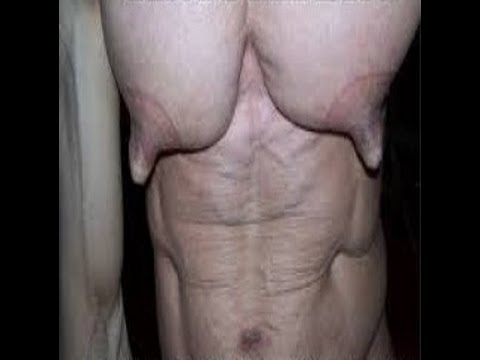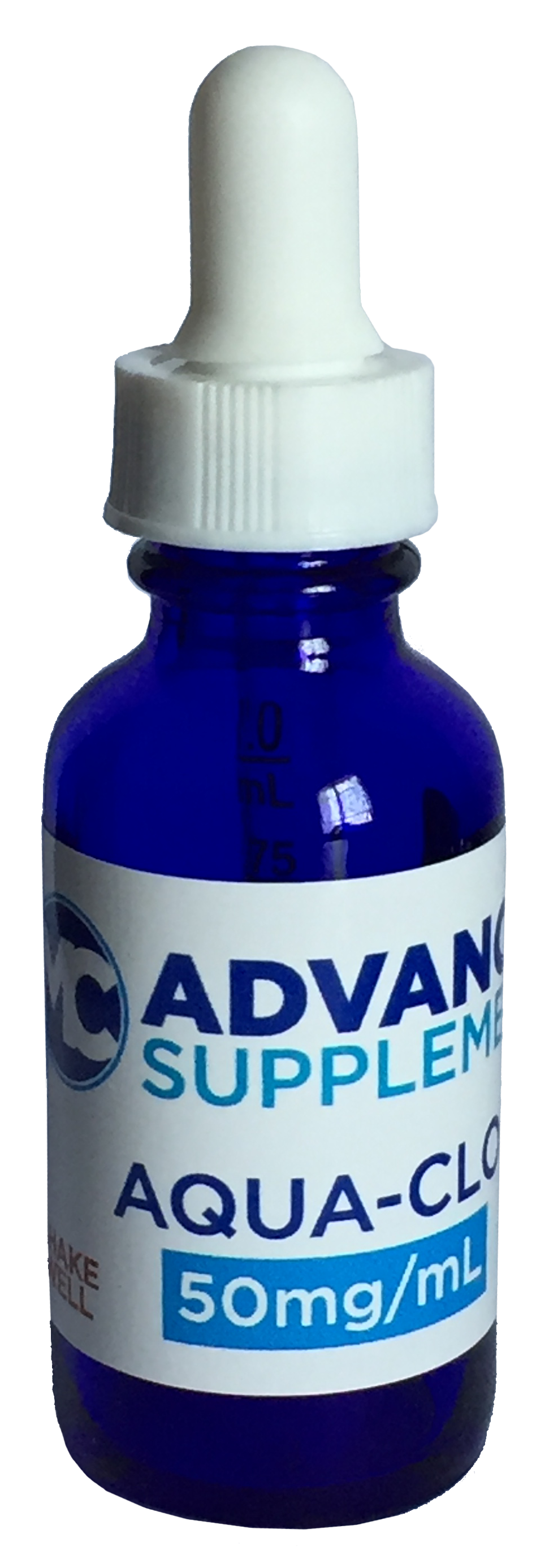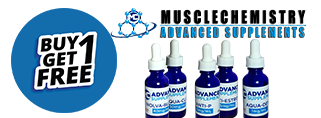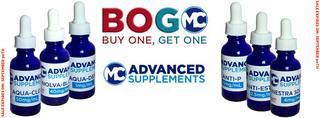Nolvadex (Tamoxifen) PCT
MuscleChemistry.com frequently asked questions on how to properly use the Post Cycle Therapy (PCT) drugs Clomid HCG and Nolvadex (tamoxifen) PCT Properly.
Why Bodybuilders Use Clomid
Clomid is a generic name for Clomiphene Citrate and is a synthetic oestrogen. It is prescribed medically to aid ovulation in low fertility females. Another generic name is Serophene.
Most anabolic steroids, especially the androgens, cause inhibition of the body’s own testosterone production. When a bodybuilder comes off a steroid cycle, natural testosterone production is zero and the levels of the steroids taken in the blood are diminishing. This leaves the ratios of catabolic : anabolic hormones in the blood high, hence the body is in a state of catabolism, and, as a result, much of the muscle tissue that was gained on the cycle is now going to be lost.
Clomid stimulates the hypothalamus to, in turn stimulant the anterior pituitary gland (aka hypophysis) to release gonadotrophic hormones. The gonadotrophic hormones are follicle stimulating hormone (FSH) and luteinizing hormone (LH – aka interstitial cell stimulating hormone (ICSH)). FSH stimulates the testes to produce more testosterone, and LH stimulates them to secrete more testosterone.
This feedback mechanism is known as the hypothalamic-pituitary-testes axis (HPTA), and results in an increase of the body’s own testosterone production and blood levels rise, to, in part, compensate for the diminishing levels of exogenous steroids. This is vital to minimise post cycle muscle losses.
Not all steroids do cause shut down of the feedback mechanism. Everyone is different and you must also take into account how long you have been using a certain steroid and at what dose in order to determine if you need Clomid or not.
Clomid also works as an anti-oestrogen. As it’s a weak synthetic oestrogen, it binds to oestrogen receptors on cells blocking them to oestrogen in the blood. This minimises the negative effects like gynecomastia and water retention that may be a result of oestrogen that has aromatised from testosterone.
It’s effect as an anti-oestrogen are quite weak though, and it should not be relied upon if you are going to be using androgenic steroids that aromatise at a rapid rate, or if you are pre-disposed to gynecomastia. Arimidex and Nolvadex (Tamoxifen) are far more effective anti-oestrogens.
Important note: Clomid does not, as is often thought, stimulate the release of natural testosterone, but rather works at reducing the oestrogenic inhibition caused by the steroid cycle. It does this in a similar manner to the way it and Nolvadex block oestrogen receptors in nipples to combat gyno development, i.e. by blocking the oestrogen receptors in the hypothalamus and pituitary thus reducing the inhibition from the elevated oestrogen. This allows LH levels to return to normal, or even above normal levels, and in turn, natural testosterone levels to also normalise.
Inhibition of the HPTA is caused by either elevated androgen, oestrogen or progesterone levels. On cessation of the steroid cycle, androgen levels begin to fall and Clomid dosing is normally commenced according to the half-life of the longest acting drug in the system (see below).
This may also explain the reason individuals often find post-deca recovery more difficult, as the progesterone presence is untouched by the Clomid. We know that Clomid and Nolvadex (being very similar chemically) are both ineffective with regard to reducing progesterone related gyno, so it is reasonable to assume that Clomid has little effect against progesterone levels.
Clomid During A Cycle
When we use anabolic steroids, the level of androgens in the body rises causing the androgen receptors to become more highly activated, and through the HPTA, a signal tells our testes to stop producing testosterone. During a cycle the body has far higher than normal levels of androgens and, as long as this level is high enough, Clomid will not help to keep natural testosterone production up. It will be almost all but completely shut off, in theory.
Some heavy androgen users, however, do advocate a small burst of Clomid mid-cycle, though it must be hard for them to say if it really of any benefit, due to the amount of gear they are using. Therefore, the only purpose of Clomid during a cycle is as an anti-estrogen.
When To Take Clomid
The correct time to commence Clomid depends on the type and cycle of steroids you have been using. Different steroids have different half-lifes (indicates the time a substance diminishes in blood), and Clomid administration should be taken accordingly.
As we have seen above, Clomid taken when androgen levels in our blood are still high will be a waste. It is crucial to wait for androgen levels to fall before implementing our Clomid therapy. However, if taken too late we could possibly lose gains.
The list below determines when you should start Clomid. Select from the list any steroids you’ve used in your cycle and whichever one has the latest starting point is the time to commence Clomid.
For example, if Dianabol, Sustanon and Winstrol were cycled, the time for administering Clomid should be 3 weeks post cycle, as Sustanon remains active in the body for the longest period of time.
Anabolic Steroid Cycles and Compounds Every Beginner Should Know About
| Steroid | Time after last administration |
Length of Clomid Cycle |
| Anadrol50/Anapolan50: | 8 – 12 hours | 3 weeks |
| Deca durabolan: | 3 weeks | 4 weeks |
| Dianabol: | 4 – 8 hours | 3 weeks |
| Equipoise: | 17 – 21 days | 3 weeks |
| Finajet/Trenbolone: | 3 days | 3 weeks |
| Primobolan depot: | 10 – 14 days | 2 weeks |
| Sustanon: | 3 weeks | 3 weeks |
| Testosterone Cypionate: | 2 weeks | 3 weeks |
| Testosterone Enanthate/Testaviron: | 2 weeks | 3 weeks |
| Testosterone Propionate: | 3 days | 3 weeks |
| Testosterone Suspension: | 4 – 8 hours | 2-3 weeks |
| Winstrol | 8 – 12 hours | 2-3 weeks |
How To Take Clomid
Clomid has a long half-life (possibly 5 days), so there is no need to split up doses throughout the day. If Sustanon has been used and Clomid is commenced 3 weeks after the last injection, I would estimate that androgen levels are low enough to start sending the correct signals. If androgen levels are still a little high, we need to start at a high enough amount that will work or help, even if androgen levels are still a little high.
Try 300mg on day 1; then use 100mg for the next 10 days; followed by 50mg for 10 days.
Nolvadex (tamoxifen) PCT Proper Protocol
As an alternative to Clomid, which has been reported to have led to unwanted side effects such as visual disturbances in some users, Nolvadex can be employed. Nolvadex is a trade name for the drug Tamoxifen.
Like Clomid, the half life of Nolvadex is relatively long enabling the user to implement a single daily dosing schedule. Administration would start as per the timescales outlined above and the duration would be identical to that of Clomid.
Typically, for a moderate-heavy cycle, the following dosages would be used:
| Day 1 | 100mg |
| Following 10 days | 60mg |
| Following 10 days | 40mg |
Occasionally, heavier cycles containing perhaps Nandrolone (Deca) or Trenbolone which by definition are particularly suppressive of the HPTA, may require a slightly longer therapy. Likewise, more modest/shorter cycles may require lower dosages, perhaps dropping each by 20mg per day.
Some users like to use both Clomid and Nolvadex in their PCT in an attempt to cover all angles. An example of the dosages involved might be:
| Day 1 | Clomid 200mg + Nolvadex 40mg |
| Following 10 days | Clomid 50mg + Nolvadex 20mg |
| Following 10 days | Clomid 50mg or Nolvadex 20mg |
Of course, the examples provided are not set in stone and may be adjusted depending on the factors outlined above and individual variances.
Using HCG
It is our opinion that HCG is probably one of the most misunderstood and misused compounds in bodybuilding. Hopefully this information will go some way towards rectifying that for readers of MuscleTalk.
HCG stands for Human Chorionic Gonadotrophin and is not a steroid, but a natural peptide hormone which develops in the placenta of pregnant women during pregnancy to controls the mother’s hormones. (Incidentally, this is the reason you may hear of people testing for growth hormone (HGH) with a pregnancy testing kit – If their HGH shows ‘pregnant’, they’ve been ripped-off with cheaper HCG – but we digress slightly).
Its action in the male body is like that of LH, stimulating the Leydig cells in the testes to produce testosterone even in the absence of endogenous LH. HCG is therefore used during longer or heavier steroid cycles to maintain testicular size and condition, or to bring atrophied (shrunken) testicles back up to their original condition in preparation for post-cycle Clomid therapy. This process is necessary because atrophied testicles produce reduced levels of natural testosterone, this situation should be rectified prior to post-cycle Clomid therapy.
HCG administration post-cycle is common practice among bodybuilders in the belief that it will aid the natural testosterone recovery, but this theory is unfounded and also counterproductive. The rapid rise in both testosterone, and thus oestrogen due to aromatisation, from the administration of HCG causes further inhibition of the HPTA (Hypothalamic/Pituitary/Testicular Axis – feedback loop discussed above); this actually worsens the recovery situation. HCG does not restore the natural testosterone production.
The typically observed dosing of 2000 to 5000IU every 4 to 5 days causes such an increase in oestrogen levels via aromatisation of the natural testosterone that this has been responsible for many cases of gynecomastia.
From the above discussion it is clear that HCG is best used during a cycle, either to:
- Avoid testicular atrophy, or
- Rectify the problem of an existing testicular atrophy
HCG Dosage
Smaller doses, more frequently during a cycle will give best overall results with least unwanted side effects. Somewhere between 500IU and 1000IU per day would be best over about a two-week period. These doses are sufficient to avoid/rectify testicular atrophy without increasing oestrogen levels too dramatically and risking gynecomastia. This dosing schedule also avoids the risk of permanently down-regulating the LH receptors in the testes.
It is important for the HCG administration to have been completed with 6 or 7 clear days before the onset of PCT in order to avoid inhibition of the Nolvadex and/or Clomid therapy. Also, a small daily dose (10-20mg) of Nolvadex would normally be used in conjunction with HCG in order to prevent oestrogenic symptoms caused by sudden increases in aromatisation.
Presentation and Administration of HCG
Synthetic HCG is often known as Pregnyl (generic name) and is available in 2500iu and 5000iu (not ideal for the above doses!). Administration of the compound is either by intra-muscular or subcutaneous injection. It comes as a powder which needs to be mixed with the sterile water.
The powder is temperature-sensitive prior to mixing and should not be exposed to direct heat. After mixing, it should be kept refrigerated and used within a few weeks – though there are sterility issues which need to be considered after mixing.
Clomid and HCG
Clomid and/or Nolvadex are more effective than HCG post cycle, but some long-term users like to use HCG during a cycle, or to prepare the testes for Clomid and/or Nolvadex therapy.
Clomid is available in 50mg tablets most commonly, but also comes in 25mg capsule, often in boxes of 24 tablets. Tamoxifen is made by a number of manufacturers and comes in 10mg or 20mg tablets, most commonly 30 x 20mg tablets. HCG generally comes in kits of three ampoules of powder needing to be mixed with the provided injectable water as 1500IU, 2500IU or 5000IU per ampoule kits.
Nolvadex (tamoxifen) PCT and Clomid (clomiphene) Post Cycle Therapy
I am not sure how Clomid and Nolvadex became so separated in the minds of bodybuilders. They certainly should not be. Clomid and Nolvadex are both anti-estrogens belonging to the same group of triphenylethylene compounds. They are structurally related and specifically classified as selective estrogen receptor modulators (SERMs) with mixed agonistic and antagonistic properties. This means that in certain tissues they can block the effects of estrogen, by altering the binding capacity of the receptor, while in others they can act as actual estrogens, activating the receptor. In men, both of these drugs act as anti-estrogens in their capacity to oppose the negative feedback of estrogens on the hypothalamus and stimulate the heightened release of GnRH (Gonadotropin Releasing Hormone). lh – leutenizing hormone – output by the pituitary will be increased as a result, which in turn can increase the level of testosterone by the testes. Both drugs do this, but for some reason bodybuilders persist in thinking that Clomid is the only drug good at stimulating testosterone. What you will find with a little investigation however is that not only is Nolvadex useful for the same purpose, it should actually be the preferred agent of the two.
Pituitary Sensitivity to GnRH
Studies conducted in the late 1970’s at the University of Ghent in Belgium make clear the advantages of using Nolvadex instead of Clomid for increasing testosterone levels (1). Here, researchers looked the effects of Nolvadex and Clomid on the endocrine profiles of normal men, as well as those suffering from low sperm counts (oligospermia). For our purposes, the results of these drugs on hormonally normal men are obviously the most relevant. What was found, just in the early parts of the study, was quite enlightening. Nolvadex, used for 10 days at a dosage of 20mg daily, increased serum testosterone levels to 142% of baseline, which was on par with the effect of 150mg of Clomid daily for the same duration (the testosterone increase was slightly, but not significantly, better for Clomid). We must remember though that this is the effect of three 50mg tablets of Clomid. With the price of both a 50mg Clomid and 20mg Nolvadex typically very similar, we are already seeing a cost vs. results discrepancy forming that strongly favors the Nolvadex side.
But something more interesting is happening. Researchers were also conducting GnRH stimulation tests before and after various points of treatment with Nolvadex and Clomid, and the two drugs had markedly different results. These tests involved infusing patients with 100mcg of GnRH and measuring the output of pituitary lh – leutenizing hormone – in response. The focus of this test is to see how sensitive the pituitary is to Gonadotropin Releasing Hormone. The more sensitive the pituitary, the more lh – leutenizing hormone – will be released. The tests showed that after ten days of treatment with Nolvadex, pituitary sensitivity to GnRH increased slightly compared to pre-treated values. This is contrast to 10 days of treatment with 150mg Clomid, which was shown to consistently DECREASE pituitary sensitivity to GnRH (more lh – leutenizing hormone – was released before treatment). As the study with Nolvadex progresses to 6 weeks, pituitary sensitivity to GnRH was significantly higher than pre-treated or 10-day levels. At this point the same 20mg dosage was also raising testosterone and lh – leutenizing hormone – levels to an average of 183% and 172% of base values, respectively, which again is measurably higher than what was noted 10 days into therapy. Within 10 days of treatment Clomid is already exerting an effect that is causing the pituitary to become slightly desensitized to GnRH, while prolonged use of Nolvadex serves only to increase pituitary sensitivity to this hormone. That is not to say Clomid won’t increase testosterone if taken for the same 6 week time period. Quite the opposite is true. But we are, however, noticing an advantage in Nolvadex.
The Estrogen Clomid
The above discrepancies are likely explained by differences in the estrogenic nature of the two compounds. The researchers’ clearly support this theory when commenting in their paper, “The difference in response might be attributable to the weak intrinsic estrogenic effect of Clomid, which in this study manifested itself by an increase in transcortin and testosterone/estradiol-binding globulin [sex hormone binding globulin ] levels; this increase was not observed after tamoxifen treatment”. In reviewing other theories later in the paper, such as interference by increased androgen or estrogen levels, they persist in noting that increases in these hormones were similar with both drug treatments, and state that,” ?a role of the intrinsic estrogenic activity of Clomid which is practically absent in Tamoxifen seems the most probable explanation”.
Although these two are related anti-estrogens, they appear to act very differently at different sites of action. Nolvadex seems to be strongly anti-estrogenic at both the hypothalamus and pituitary, which is in contrast to Clomid, which although a strong anti-estrogen at the hypothalamus, seems to exhibit weak estrogenic activity at the pituitary. To find further support for this we can look at an in-vitro animal study published in the American Journal of Physiology in February 1981 (2). This paper looks at the effects of Clomid and Nolvadex on the GnRH stimulated release of lh – leutenizing hormone – from cultured rat pituitary cells. In this paper, it was noted that incubating cells with Clomid had a direct estrogenic effect on cultured pituitary cell sensitivity, exerting a weaker but still significant effect compared to estradiol. Nolvadex on the other hand did not have any significant effect on lh – leutenizing hormone – response. Furthermore it mildly blocked the effects of estrogen when both were incubated in the same culture.
Summary
To summarize the above research succinctly, Nolvadex is the more purely anti-estrogenic of the two drugs, at least where the hpta – hypothalamic-pituitary-testicular axis – (Hypothalamic-Pituitary-Testicular Axis) is concerned. This fact enables Nolvadex to offer the male bodybuilder certain advantages over Clomid. This is especially true at times when we are looking to restore a balanced hpta – hypothalamic-pituitary-testicular axis – , and would not want to desensitize the pituitary to GnRH. This could perhaps slow recovery to some extent, as the pituitary would require higher amounts of hypothalamic GnRH in the presence of Clomid in order to get the same level of lh – leutenizing hormone – stimulation.
Nolvadex also seems preferred from long-term use, for those who find anti-estrogens effective enough at raising testosterone levels to warrant using as anabolics. Here Nolvadex would seem to provide a better and more stable increase in testosterone levels, and likely will offer a similar or greater effect than Clomid for considerably less money. The potential rise in sex hormone binding globulin levels with Clomid, supported by other research (3), is also cause for concern, as this might work to allow for comparably less free active testosterone compared to Nolvadex as well. Ultimately both drugs are effective anti-estrogens for the prevention of gynecomastia and elevation of endogenous testosterone.




